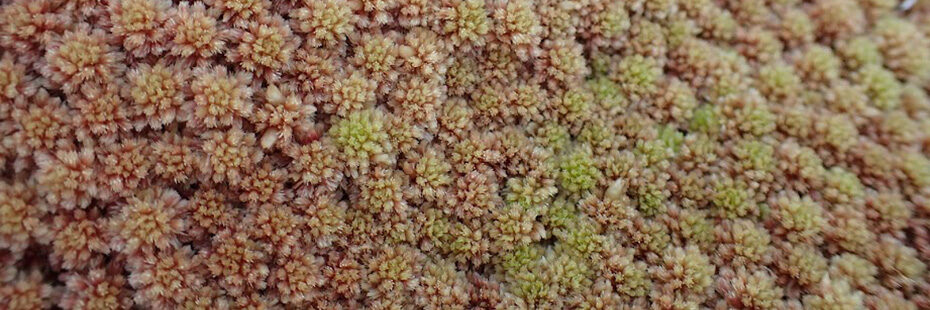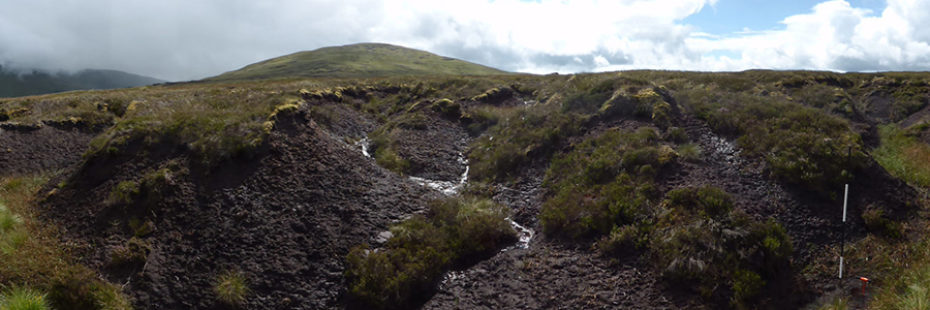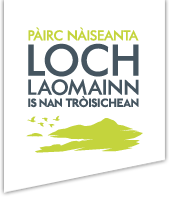
Peatland restoration
Restoring peatlands is a nature-based solution to tackle the climate emergency and nature crisis.
What is peat and how does it form?
Peatlands (also known as bogs) are a wetland ecosystem. They are a vital habitat, supporting a huge variety of unusual plants and insects.
Lots of plants grow here. One of the most important for peat formation are Sphagnum mosses. These type of mosses thrive in wet conditions and can hold 10 times their weight in water!

Sphagnum capillifolium © RJCooper
As peat bogs are so waterlogged, when these plants die they don’t break down properly due to lack of oxygen. Over time, layers of plant material build up and compact the layers below. On average, peat grows about 1mm every year. In the National Park we have peatlands that are over 4 metres deep!
Why are peatlands important?
There are many amazing benefits of peatlands. Click on the headings below for more detail.
Plants absorb carbon from the air to grow. Because plants on a peatbog don’t decay when they die, the carbon is instead stored in the peat. Globally, peatlands only cover 3% of the land area but store 30% of the world’s soil carbon (nearly 550 billion tonnes of carbon). That is twice as much carbon as all the world’s forests.
Peatlands support animals, plants, fungi and micro-organisms that are specially adapted to this unique habitat. Some of which are not found together anywhere else in the world.
The plants on a healthy peatland can slow the flow of water better than eroded peatlands, which have areas of bare ground. This reduces the number and severity of flash flood events further downstream.
Much of our drinking water comes from peatland areas, including most of the land in the National Park. By keeping peatlands in good condition, we can reduce the amount of pollutants and peat from reaching our water supply. This leads to lower costs for water treatment.
Healthy peatbogs are generally wet with very little oxygen below the surface. This provides great conditions for preserving a range of materials. Organic materials can survive for thousands of years in peat. This can be very useful for archaeology, ecology and studies of environmental change.
Drained and damaged peatlands

Peatland in poor condition © RJCooper
Peatland is a type of wetland. So, when it is drained or damaged (such as having the top layer cut off), it doesn’t function as it should. The peatland begins to release those harmful greenhouse gases, instead of storing them. This contributes towards climate change.
In the past Scotland’s peatlands were drained to try and ‘improve’ the land for agriculture.
Peat soils cover more than 20% of Scotland but 80% of that is considered to be in a degraded condition.
What causes peatlands to degrade?
- Overgrazing – When peatlands are overstocked there can be a change in vegetation cover. Grazing pressure can cause a decrease in sphagnum mosses which are crucial for a healthy peatland. Trampling from livestock can also cause an increase in erosion and a decrease in water quality.
- Drainage – Drainage can lead to a direct loss of water from a bog allowing more carbon dioxide to be released into the atmosphere. It can also lead to a change in vegetation cover. Drains can increase the rate of water run-off, increasing erosion of peat (leading to more sediment in the water) and exposing more peat to the atmosphere.
- Afforestation – Planting of trees on peat requires drainage which has a negative impact on peatlands. Plantations also result in the direct loss of biodiversity and specialised peatland species.
Restoring peatlands
It is estimated that 68,000ha of land within Loch Lomond & the Trossachs National Park is covered by peatland. That is over one third of the whole National Park.
We work with local land managers to reprofile and rewet the National Park’s peatlands so we can prevent further erosion of peatlands and trap carbon back in the soil. This will help to mitigate the impacts of the climate emergency.
Methods for restoration include:
- Drain/grip blocking – By damming drains we can slow the flow of water leaving the peatland and help redirect water onto the bog.
- Gully and hag reprofiling – By restructuring the vertical sides of eroding gullies and covering areas of bare peat with turf we can stabilise the gullies and encourage revegetation.
- Bare peat revegetation – By seeding a nurse crop over bare peat we can help stabilise the peat and encourage colonisation by bog species.
Peatland ACTION
We are a partner in Peatland ACTION, a Scottish Government initiative. Launched in 2012, the project supports peatland restoration across the country. Already, it has set 25,000 hectares of Scotland’s peatlands on the road to recovery.
Loch Lomond & the Trossachs National Park has two Peatland ACTION Project Officers to:
- identify potential peatland restoration projects,
- provide guidance on restoration plans,
- monitor restoration works, and
- help obtain funding from Peatland ACTION.
Find out more about this partnership from Simon Jones, Loch Lomond & the Trossachs National Park Authority Director of Conservation and Visitor Operations:
Our legacy
We believe this work is an essential part of Scotland’s contribution to tackling the global climate emergency. We hope that the work we do on the hills of the National Park today will benefit future generations. Through peatland restoration, we can protect the planet and provide a vitally important habitat for wildlife.


